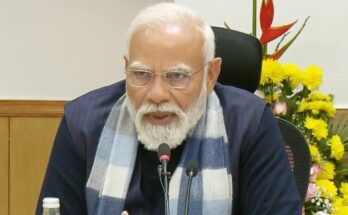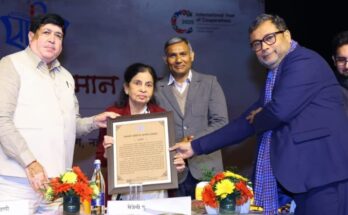B S Prabhurajan
It’s that time of the year in Mysuru when its royal family is celebrated! Come Dasara and the festivities revolve around the scions of the Mysuru royal family with their history and the palaces they live in becoming the cynosure of all eyes. This year two golden masterpieces -the throne and the howdah are drawing everyone’s attention especially the tourists in the city of palaces.
The religious event ie Dasara which marks the beginning of the state festival ‘Nadda Habba’ on September 29 will conclude on Vijyadhashyami on October 8. It has a history dating back to several centuries. The festival will be a low key affair this year due to death of farmers in the state. Apart from the state sponsored dasara festivities, the last scion of the Wadiyar dynasty, Yaduveer Krishnadatta Chamaraja Wadiyar, who was adopted by the Mysuru royal family only this year, after the death of Srikantadatta Narasimharaja Waddiyar, continues to practice religious chores as mentioned in Hindu religious texts though not publically.
The essence of the Dasara festival revolves around the concept of paying one’s gratitude to the almighty for showering his blessings in the past and also seeking his grace in the future. Palace board deputy director M R Subramaniam said the historical records reveal that after the fall of the Vijyanagara Empire, the nayakas of Keladi and Ikkeri, and then the Wadiyars of Mysuru have continued traditionally observing the festival.Monarchs might have relevance in the democratic set up but the throne, which has changed hands over centuries from different kingdoms, is still, watched with awe as every year the common man gets a glimpse of it during this religious event, which dates back to several centuries.
The magnificent golden throne belonged to the Pandavas, according to historical texts in 1338 the Raja Guru of the Vijyanagar Empire, Vidyanarya, helped Harihara first, one of the founders of the Vijayanagara kingdom, to retrieve the throne, later used by subsequent rulers of the empire for more than a century. In 1609, the ailing governor Srinarya, handed over the throne to Raja Wadiyar before retiring to Talkadu near Mysuru.Raja Wadiyar then ascended the throne in 1610 marking the commencement of celebrations of Dasara in this part of the region. This throne was recovered from a room in Tipu Sultan’s palace at Srirangapatanna after his fall. It was then used in the coronation of Raja Wadiyar in 1799 and since then has remained with the Wadiyar’s family.
This bejeweled throne, originally made of the wood of a fig tree, is detailed in a Sanskrit work ‘Devatanama Kusumanjari ‘ compiled by Krishnarja Wadiyar in 1859. The balustraders of the steps of the throne are embellished with figurines, while the golden umbrella has festooned and the four sides decorated with Vyias and creepers. It has lord Brahma to the south, Lord Maheswara to the north and lord Vishnu at the centre, forming the trinity. To the four corners are the Vyias and the four lions, two of the mythological shardulas, two horses and swans in four corners. It was the golden umbrella, featuring in as many as 24 slokas in anusthuba, that is the cynosure of all eyes, an exquisite work of art, the golden throne, over the years, has undergone a few changes with its height raised and the number of steps leading to the ‘asana’ increased. However, the throne has retained its original artistic decorative features.
The other thrones at the palace are the Mayura Bajarasna, where goddess Chamundeswari is seated, the Bajarasa, used primarily for Saraswathipura, and the Simha Bajarasana, generally used by the royal couple for ceremonies. The throne will be used by the Mysore royal family during the Dasara festivities with scion of the family Srikanatadatta Narasimharja Wadiyar ascending the throne during the Navaratri in a private durbar inside the palace from October 3 onwards. As of now the throne is under the government custody but during dasara festivities it would be kept for the public view in the palace for one month.
Another object of art the ‘golden howdah’ also has attention of visitors. Though exact date of its making is not known, it was built by a team of talented goldsmiths employed by the erstwhile Mysore rulers. The 750 kgs golden howdah, which will be used on the Vijayadhasmi day on October 8 in the ‘Jumboosavari’ (procession), has two wide seats in rows and is bigger than the interiors of a family car. The Rajas of the Mysore used this ‘howdah’ in the famous dasara procession which traversed through the areas of the princely city of Mysore during the festival every year. From the early 1970s, idol of the Sri Chamundeswari, principal diety of Mysuru was being carried in the ‘howdah’ atop a caparisoned elephant on the concluding day of the ten day festivities.
The Palace Board Deputy Director Subramanian told UNI that Mysore palace famous for its architectural splendor is second only to Taj Mahal in terms of attracting tourists. Over three million people visit it every year, he pointed out.Its wooden palace was gutted in a fire accident and the main three storied building is made of a massive grey granite and is covered by a gilded dome. The first floor of the palace has a durbar hall measuring 155 feet by 42 feet. There is a private durbar hall, ambavilas, which is tastefully decorated. They are housed on the same floor and the second floor has several rooms and large halls on either sides. A massive marriage hall is located in the ground floor.
In the octagonal marriage pavilion, the walls are decorated with murals depicting the dasara festivities. Well known artists, under the patronage of the Krishnaraja Wadiyar , have immortalised the dasara procession on canvas in 26 panels which has made the marriage hall a veritable gallery of paintings even today. The central aisle has a beautiful stained glass ceiling decorated with delicate designs supported by a cast iron pillars, all of which were manufactured by the famous Macfarlanes company of Glasgow in Scotland.
According to the department of archeology and museum, the early history of the Mysore palace is unrecorded, the annals of the its royal family revealed that the Rajas of the 14th century were living in the palace in the city. However, the very first mention of the palace was made in 1630 when the palace was rebuilt by Ranadhera Kanteerva Narasimharaja Wadiyar after the old palace was damaged by lightning in 1793. Tipu Sultan is said to have removed all the old, dilapidated buildings, including the palace, to build a new city called Naziabad, but till 1799 there seemed to be no palace by this name in Mysuru.
The duke of Wellington is said to have emphatically stated that there existed no place suitable for the coronation ceremony of the prince,however, the ceremony, is said to have taken place in a pandal erected at Naziabad, and even today this Naziabad city remains as an extension of Mysuru city. Subsequently, the royal family moved into the ancient palace which was rebuilt in the same form in two years’ time which paved way for major repairs in the palace by the end of the 18th century.
A major fire in 1897, during the marriage of Princess jayalakshmammaniyavaru, destroyed the greater part of the wooden palace, however, a photograph of the palace taken by John Bird Wood, employed with the Mysore army, thrived. The photograph was presented to Maharani Vinivilasmannavaru, who then decided to build a new palace replicating the old one. Maharani Vinivilasmannavaru inaugurated the present palace in Obctober 1897 after a renowned architect Henryirwin prepared the architectural plans of the palace which took fifteen years to complete at a cost of Rs 41, 47,913. Currently, the Mysore palace is a major attraction in this part of the country and state government has formed a Palace Board which will take care of its maintenance. (UNI)




